Key takeaways:
- Effective research collaboration thrives on open communication, mutual respect, and inclusivity, fostering creativity and innovation.
- Africa-Europe partnerships enhance scientific capabilities through knowledge exchange and capacity building, addressing global challenges like climate change.
- Cultural differences, resource disparities, and bureaucratic hurdles are significant challenges in collaboration, highlighting the need for mutual understanding and streamlined processes.
- Future opportunities for collaboration include leveraging technology, joint funding initiatives, and mentorship programs to strengthen ties and amplify diverse perspectives.
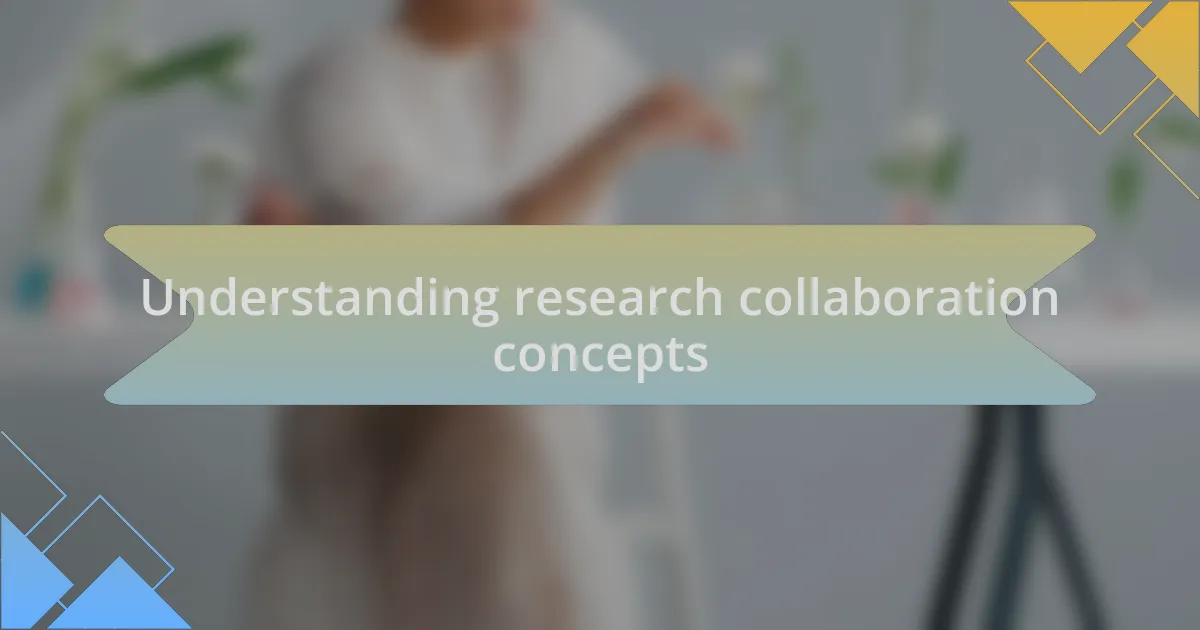
Understanding research collaboration concepts
Research collaboration is fundamentally about pooling diverse expertise to tackle complex problems. I remember my first collaborative project; the energy was palpable as experts from various fields came together, sharing ideas and perspectives. It made me realize that collaboration isn’t just about sharing work; it’s about blending visions, which can lead to breakthroughs that might not occur in isolation.
When I think about effective research collaboration, I often wonder: What truly makes a partnership thrive? In my experience, open communication and mutual respect are cornerstones of successful collaboration. It’s not just about dividing tasks; it’s about creating a space where everyone feels valued and their contributions are recognized. This inclusivity fosters creativity and innovation, allowing teams to navigate challenges more effectively.
Moreover, understanding the different models of collaboration can be enlightening. Whether it’s a formal partnership or a more casual network of researchers, each model has its advantages and challenges. I’ve found that flexibility often determines success. Adapting to one another’s workstyles and timelines can significantly influence the outcome of collaborative efforts, creating a dynamic and responsive research environment.
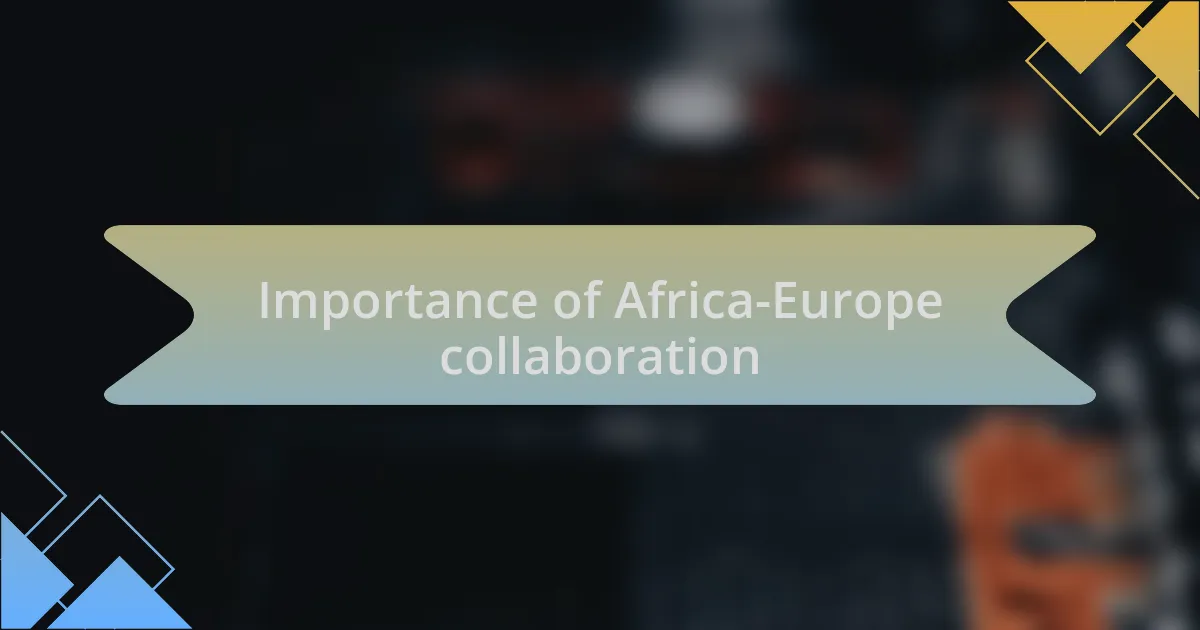
Importance of Africa-Europe collaboration
The importance of Africa-Europe collaboration cannot be overstated. I recall a project where researchers from both regions united their strengths to address climate change – I felt the palpable urgency in our discussions. This partnership enabled us to leverage local knowledge and advanced technologies, ultimately making our findings more relevant and impactful to both communities.
In my view, such collaborations are essential for addressing global challenges. Have you ever considered how interconnected our issues are? The shared expertise can lead to innovative solutions that are culturally and contextually adapted. Seeing firsthand how African and European researchers engaged in dialogue helped me appreciate diverse perspectives, resulting in more comprehensive approaches to problems.
Furthermore, the benefits of collaboration also extend to capacity building. During a workshop in Africa that I attended, I witnessed how European colleagues provided training in advanced research methods. This kind of knowledge exchange not only empowers local researchers but also enriches the entire field. It’s a mutually beneficial cycle that enhances both regions’ scientific capabilities.
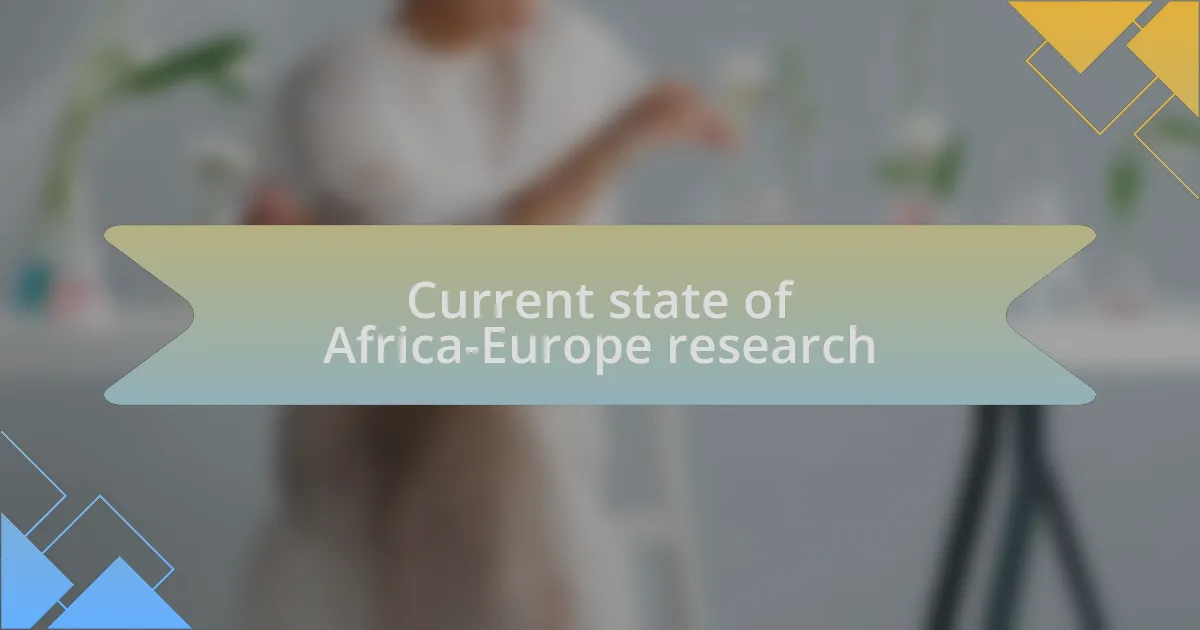
Current state of Africa-Europe research
The current state of Africa-Europe research reflects a growing recognition of the need for diverse perspectives in tackling complex issues. Recently, I attended a conference where researchers from both continents shared their latest findings. It was fascinating to witness the synergy created by blending African fieldwork with European analytical approaches; their collaboration sparked innovative ideas that I had never considered before.
However, we still face significant challenges. I often wonder why funding disparities persist between the two regions, limiting many promising initiatives. I participated in a discussion where African researchers expressed frustration over the allocation of grants, which often overlook local expertise. Their commitment despite these hurdles left a deep impression on me, highlighting the resilience and creativity present in research communities that continue to strive for impactful outcomes.
Moreover, the digital era has transformed the landscape of research collaboration. During a virtual seminar, I was amazed by the ease of communication that technology provides, allowing for real-time collaboration regardless of geographic barriers. This shift not only enhances the flow of ideas but also fosters a sense of community among researchers that is essential for scientific advancement. Have you felt that shift in your work as well? It’s an exciting time for cross-continental partnerships, and I genuinely believe we’re only just scratching the surface of what is possible.
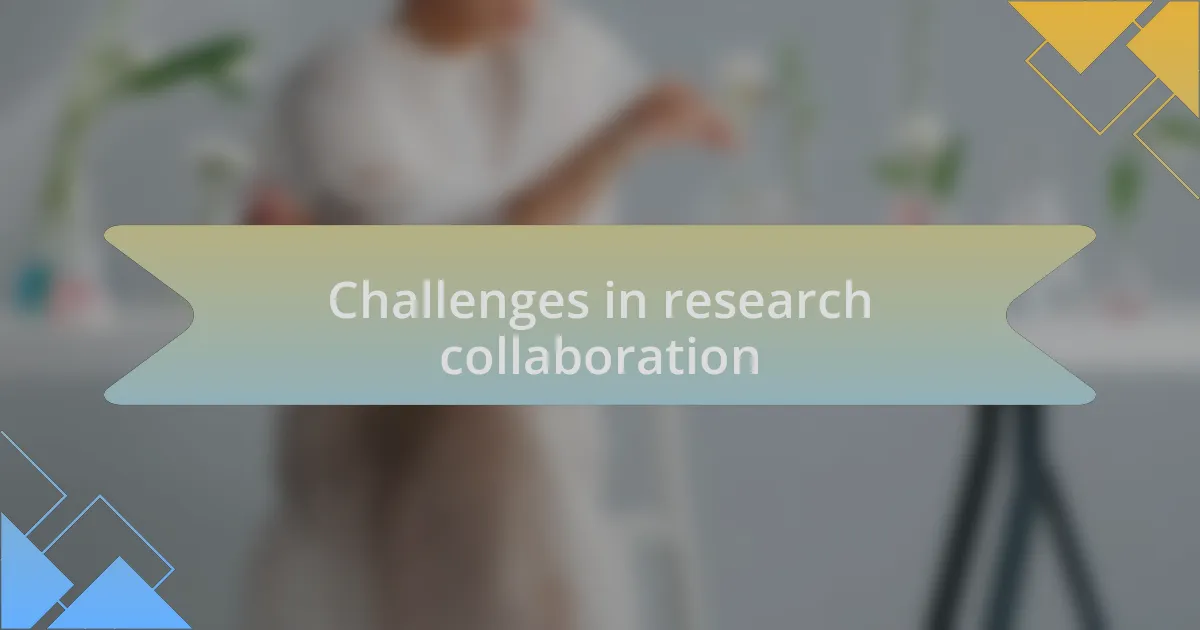
Challenges in research collaboration
One of the biggest challenges in Africa-Europe research collaboration is the issue of cultural differences. I remember a joint workshop where researchers struggled to find common ground due to varying communication styles and expectations. It made me realize how crucial it is to invest time in building mutual understanding, as assumptions can lead to misinterpretations and hinder meaningful dialogue.
Another significant challenge is the disparity in infrastructure and resources. During a recent project, I encountered African colleagues who often had limited access to essential research tools and facilities that are often taken for granted in Europe. This gap not only slows down progress but can also be disheartening, making one wonder how many groundbreaking ideas remain unpursued simply because of infrastructural constraints.
Lastly, navigating bureaucratic hurdles can be a daunting task. I have witnessed firsthand how complex regulations and institutional red tape can impede collaboration efforts. At times, it felt like we were spending more time on paperwork than on actual research. Have you faced similar frustrations? It’s a reminder that streamlining processes could significantly enhance our collaborative efforts, ensuring that innovative research doesn’t get stifled by unnecessary obstacles.
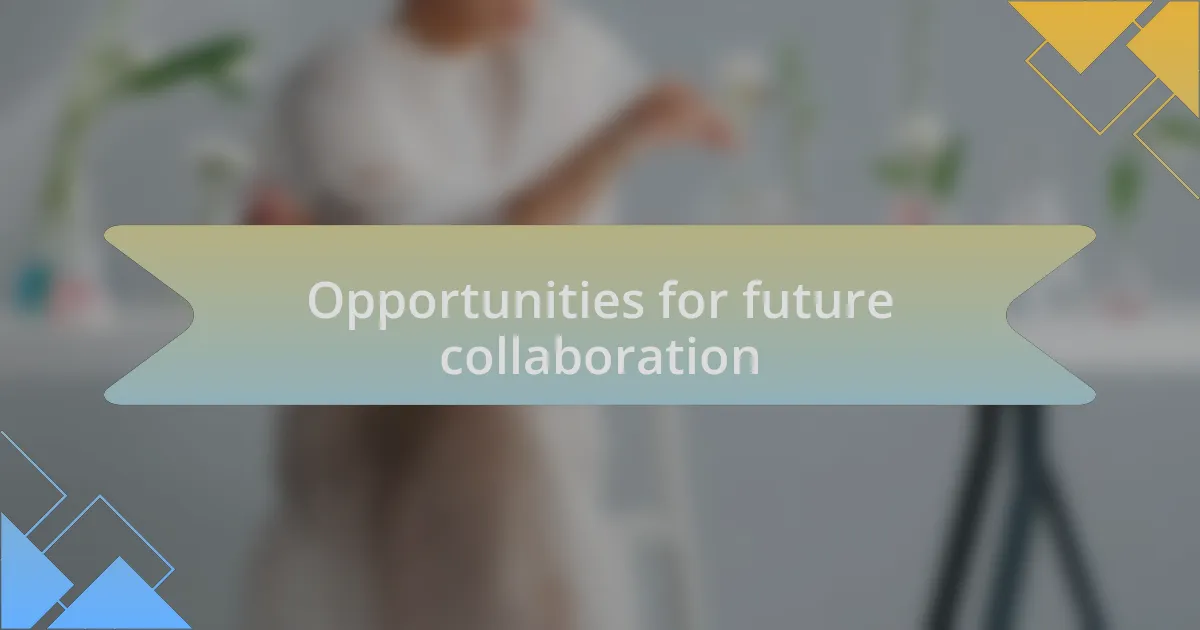
Opportunities for future collaboration
When I reflect on the potential for future collaboration between African and European researchers, I envision the power of technology as a major facilitator. For instance, I once participated in a virtual conference that connected scientists from various countries, widening our access to diverse perspectives. This format not only made collaboration more flexible, but it also sparked innovative ideas that may have not emerged in a traditional setting. Isn’t it exciting to think how digital platforms can break down geographical barriers and forge connections?
Moreover, there is a tremendous opportunity for joint funding initiatives that strategically target shared global challenges. I recall a project proposal that combined resources from both regions to tackle climate change, which ultimately resulted in more comprehensive and impactful research. Why not leverage the strengths and innovations of both continents by creating funding schemes that encourage collaborative projects directly addressing pressing issues? This could ensure that the voices from both sides are amplified and that solutions are co-created.
Lastly, mentorship programs can serve as a bridge to foster future collaboration. I’ve seen firsthand how established researchers can guide younger professionals, facilitating knowledge transfer that deeply enriches both parties. Imagine a seasoned European researcher partnering with a young African scientist — the growth, learning, and breakthroughs that can emerge from such relationships are boundless. How can we build structures that encourage these kinds of mentorships? By investing in nurturing future leaders in research, we pave the way for a vibrant and successful collaborative future.
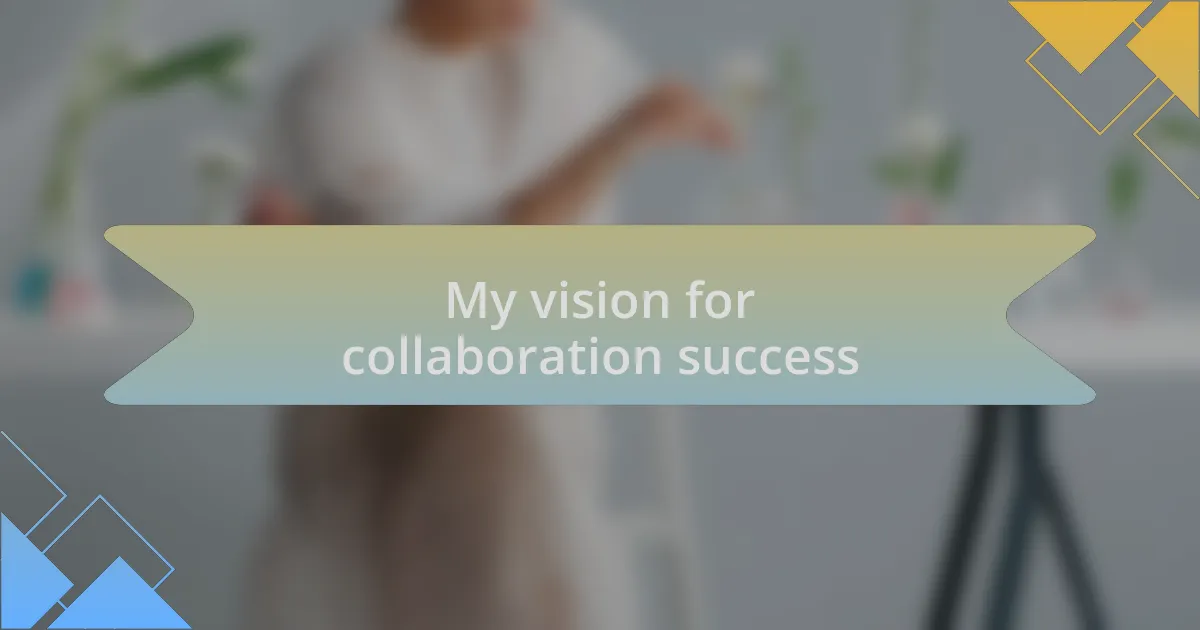
My vision for collaboration success
In my vision for collaboration success, I see an ecosystem where researchers feel truly empowered and supported. For instance, in a past experience, I witnessed the transformation of a project when international teams regularly shared updates and insights through open forums. This cultivated a sense of camaraderie that transcended borders. Isn’t it remarkable how transparent communication can ignite enthusiasm and trust among collaborators?
I believe that establishing sustainable partnerships hinges on shared goals and mutual respect. Reflecting on a collaborative endeavor I was involved in, I noticed how prioritizing equal contributions led to more innovative outcomes. When everyone feels their expertise is valued, the momentum of the project naturally accelerates. What if we fostered environments where researchers from both Africa and Europe convene not only to collaborate but to celebrate each other’s unique strengths?
Lastly, I envision a future where success is measured not just by published papers but by real-world impacts. I remember working on a community-driven initiative that integrated scientific research with local knowledge, leading to solutions that wouldn’t have been possible in isolation. It made me wonder—how can we ensure that our collaborative efforts resonate with and benefit the communities involved? Enabling research that listens and responds to the needs of societies will ultimately define the essence of our success.
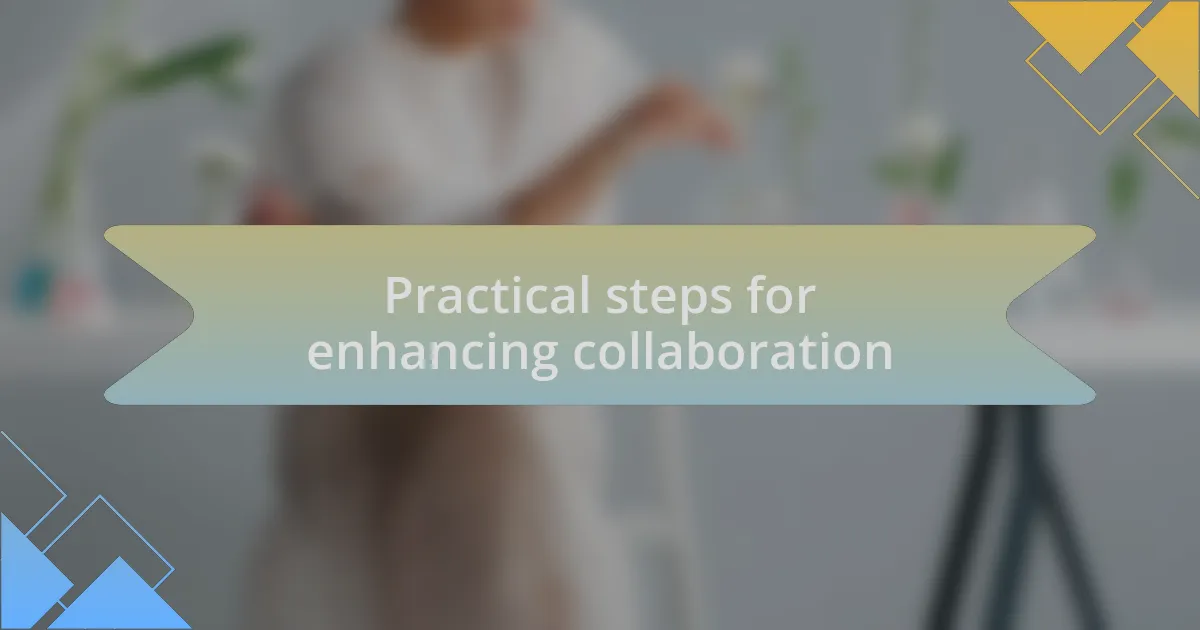
Practical steps for enhancing collaboration
Creating a robust framework for collaboration starts by integrating technology that facilitates seamless communication across continents. From my own experience, utilizing collaborative platforms has allowed diverse teams to engage more effectively, eliminating time-zone hurdles. How often have you found yourself awaiting responses in an email thread? By adopting tools that encourage real-time interaction, we can significantly reduce misunderstandings and enhance productivity.
Another practical step lies in establishing joint training programs that foster skill-sharing and knowledge exchange. I recall attending a workshop where researchers from various backgrounds shared their methodologies; it was eye-opening. I realized how each person’s approach—rooted in different cultural contexts—brought fresh perspectives to common challenges. Could these shared learning experiences be the key to bridging gaps and cultivating lasting partnerships?
Lastly, it’s important to implement regular feedback loops within collaborative projects. Drawing from a recent experience, I saw how periodic evaluations transformed a faltering initiative into a success story. By encouraging open discussions about what works and what doesn’t, we create an atmosphere where frustration is addressed early, allowing for adaptive solutions. Isn’t it empowering to know that constructive criticism could be the catalyst for groundbreaking advancements in our collaborative endeavors?